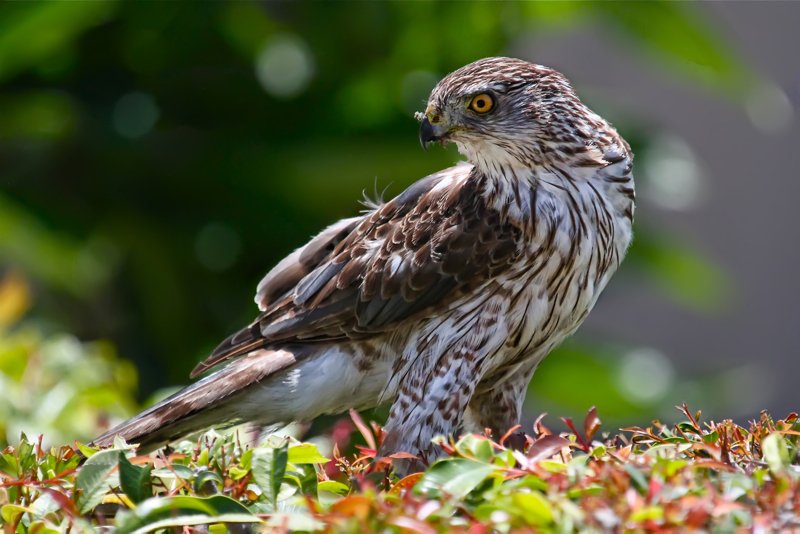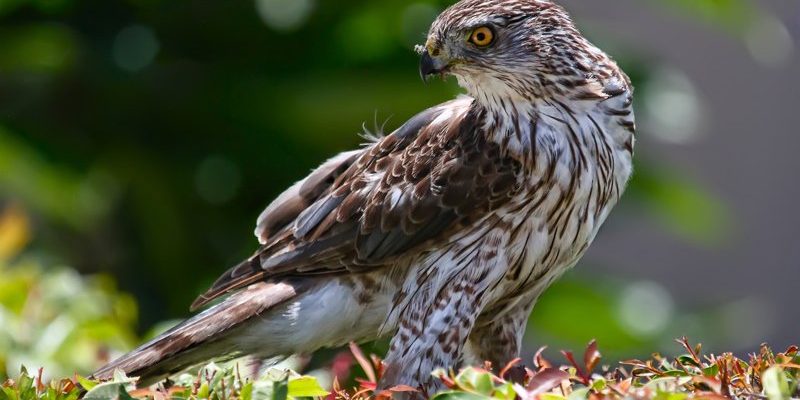
The Cooper’s Hawk has a unique story, woven into the fabric of North America’s landscapes. From its early days to its current status, the evolution of this elegant hunter offers insights into how species can thrive even while their surroundings shift dramatically over time. So, grab a cup of coffee, sit back, and let’s dive into the captivating journey of the Cooper’s Hawk.
Origins and Naming of the Cooper’s Hawk
The Cooper’s Hawk, scientifically known as *Accipiter cooperii*, was named after the American naturalist William Cooper. He was an early supporter of ornithology in the United States and contributed to the awareness of North American birds. You might wonder, why is this important? Naming a species often reflects a connection to human history and highlights the role of scientists in understanding wildlife.
The Cooper’s Hawk is part of the Accipitridae family, which includes other hawks and eagles. These birds are known for their keen eyesight and incredible hunting skills. Imagine how they navigate through dense forests and urban areas, using their sharp vision to spot prey. It’s like having a built-in radar for small animals! Their evolutionary journey has led them to adapt in remarkable ways, allowing them to survive in various habitats.
Physical Characteristics of the Cooper’s Hawk
The Cooper’s Hawk is medium-sized, typically ranging from 14 to 20 inches long. Honestly, they’re quite beautiful. With their blue-gray wings, rust-colored underparts, and distinctive long tails, they stand out against the backdrop of trees. If you ever see one perched high, quietly scanning its surroundings, you might think of it as a stealthy ninja of the bird world.
One of the most interesting features of Cooper’s Hawks is their size differences based on gender. Females are larger than males, which is an example of sexual dimorphism—a phenomenon where genders of the same species look different. It helps the female and male to hunt different prey sizes, which is essential for survival.
Habitat and Distribution
Cooper’s Hawks are found throughout North America, from southern Canada to northern Mexico. They thrive in a variety of environments, including deciduous and mixed forests, and even suburban areas. Here’s the thing: they have a knack for adapting to urban landscapes, often seen swooping between buildings and trees.
In cities, these hawks find plenty of food—like pigeons and squirrels—and nesting sites. It’s almost like they’ve claimed the title of “urban bird of prey.” This adaptability has allowed their population to grow in areas where other raptors might struggle, showcasing their resilience in the face of changing environments.
Diet and Hunting Behavior
Cooper’s Hawks are skilled hunters, primarily preying on small birds and mammals. They excel in short bursts of speed and agile flying, allowing them to navigate through dense foliage to catch unsuspecting victims. You might picture them, using their stealth to get as close as possible before launching into action—it’s like a game of hide-and-seek at lightning speed.
Their diet can vary based on availability, which is crucial for their survival. In urban areas, they often target birds that are more plentiful, such as house sparrows and starlings. This specialization makes them fascinating to observe in action, and it reflects their ability to adapt their hunting strategies to fit their environment.
Reproduction and Nesting
When it comes to mating, Cooper’s Hawks are monogamous, often forming strong pair bonds. During the breeding season, which typically occurs from late winter to spring, they engage in elaborate courtship displays. You might spot them performing aerial acrobatics, showcasing their agility and strength—like a pair of aerial dancers.
Nests are usually built high in trees using sticks and lined with softer materials. The female lays around 3 to 5 eggs, which both parents help incubate. Once the chicks hatch, they’re incredibly demanding, needing constant care and feeding. It’s a reminder that parenting in the wild is no easy feat, and the young hawks must grow quickly to prepare for the challenges of life outside the nest.
Conservation Status and Threats
Over the years, the Cooper’s Hawk faced various threats, from habitat destruction to the use of pesticides. Their populations dwindled, prompting conservation efforts to help stabilize numbers. Fortunately, these hawks have bounced back due in part to protected habitats and changing attitudes towards wildlife conservation.
However, they still face challenges, particularly from habitat fragmentation. Urban development can limit their hunting grounds and nesting sites. That’s why understanding their needs is essential for maintaining healthy populations and ensuring these remarkable birds thrive in the future.
The Cooper’s Hawk in Culture
The Cooper’s Hawk holds a unique place within cultural contexts. Many people appreciate them as symbols of wildness and freedom. Their presence in both rural and urban landscapes serves as a reminder of nature’s resilience, even in human-dominated spaces. You might find them inspiring poets, artists, and conservationists alike.
From ancient stories celebrating the power of birds of prey to modern urban wildlife initiatives, the Cooper’s Hawk continues to capture human imagination. It’s a beautiful example of how we can coexist with nature, learning from and respecting the wildlife that shares our spaces.
In conclusion, the journey of the Cooper’s Hawk offers a rich tapestry of history, adaptation, and survival. It reflects the broader story of wildlife in a changing world, highlighting the importance of conservation and appreciation for these elegant birds. Next time you spot one soaring overhead or perched quietly, remember the incredible story behind this fascinating raptor.

